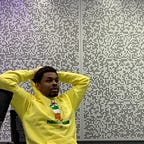King Kong (2005): Technique
Peter Jackson is one of my all-time favorite directors solely due to Lord of the Rings. I’m of the belief that Lord of the Rings is (I count them as one movie) the best movie ever made. Jackson’s masterful ability to tell stories that are intimate and emotional while also being massive in scope isn’t something that’s often done well in Hollywood. In order to further determine why I liked his filmmaking so much, I decided to give his film King Kong(2005): Extended Cut a rewatch. I quickly figured it out. While Jackson always delivers with great characters and emotion, his strength — particularly in this film — lay in his reliance on the more technical aspects of filmmaking.
King Kong (2005) is Peter Jackson’s incredible remake of the original 1933 stop motion animatic. The film starts with a filmmaker and his crew sailing on a ship to go shoot his new movie on location. However, the ship they are traveling on gets drawn in and trapped in the tumultuous bay of Skull Island. Thinking it can add more to his movie, the director Carl Denham (Jack Black) leads the crew onto the island where they run into the island’s indeginous people. They kidnap Ann Darrow (Naomi Watts) and offer her as a sacrifice to the deadliest force on the island — Kong. Kong emerges from the forrest, his giant hand snatches her up, and he disappears back into the forrest. The crew goes after him hoping against hope that they can rescue Darrow from his clutches. Their path isn’t easy, as Jackson throws every bug and critter on their path. Yet they fight through regardless. Amidst all the adventure and strife, Kong and Darrow form a relationship that serves as the soul of the movie. As the movie goes forward, Kong displays both his violence and his gentleness while becoming completely enraptured by Darrow. The movie does eventually return back to New York City with Kong captured. It is here that I witnessed the incredible reimagining of Kong climbing up the Empire State with Darrow in hand, trying to fight off the fighter-biplanes looking to take him down.
The way action is choreographed in this movie is chaotic and beautiful. There are sequences in this movie that are just downright jaw dropping and incredibly entertaining. While some of the sequences can be silly, the fluidity of the movements sparked a prolonged suspension of disbelief. Whenever Kong was battling on screen, it felt like there was emotion and reason behind every punch, kick or bite. I think my mouth hung open for the entirety of Kong’s viscous battle against three Tyrannosaurus Rexes with Ann Darrow in hand. Even the high stress situations that the humans find themselves in are carefully choreographed and are so much fun to watch. Human elements in monster movies tend to be more annoying than interesting but that was definitely not the case here.
Choreography of an action sequence doesn’t matter unless the shots and action beats are put together in a way that delivers the moment with gravitas and emotion. Jackson and his editor, Jamie Selkirk, completely nailed it when Kong is rampaging through New York City. There are multiple two second shots, from different angles, of cars zooming through the frame, intercut with rapid shots of the cars smashing violently into one another, intercut with Kong destroying everything around him in a panicked, angry craze. The reliance on quickly intercutting between different contextual shots added to the hysteria of the scene. It felt like I was interacting with the mayhem, which shot my adrenaline up and allowed me to further escape into what I was experiencing. It was also impressive to see how well the action sequences were interwoven into the overall story. Sometimes, big action movies feel disjointed because of a sudden shift in pacing that can leave me feeling jarred. Every action scene in this movie, no matter how violent or how quiet, felt like it flowed naturally into each other. While the editing and choreography of the film helped pack a solid punch, the biggest wallop came with the sound editing.
Jackson ensured that sound wasn’t just a background element. In many ways, the sound was the star of the film. The clattering of cars crashing caused me to wince. The clicking and crawling of every critter sent shivers down my spine. The shrill scream of Darrow induced anxiety. The impact from every mammoth punch felt personal. The foley and sound design used in this film is terrific. It isn’t just sound that adds to the immersion, it’s the way the sounds are mixed with one another. They aren’t just stacked on top of one another to make a bunch of chaotic noise — there is a rhythm to the sounds made throughout the movie that build off of one another. It at times sounded like music.
King Kong was Peter Jackson’s favorite movie growing up and it shows in every way here. It’s a wonderful homage to the old movies and an impressive stamp on the monster/fantasy movie genre by Peter Jackson. I’ve come to understand that I enjoy Jackson’s films because of the passion that he possesses for the material. This passion trickles down into every aspect of filmmaking, thus creating an intoxicating viewing experience.
